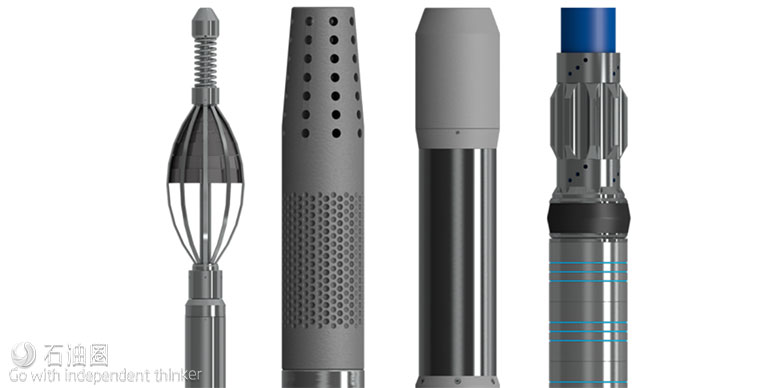BiSN has developed a revolutionary chemical reaction heater that brings the technology into the 21st century and opens the door to a range of applications previously thought impossible. This new and unique technology is changing the way downhole sealing has been carried out for over 100 years.
During the completions stage, it is important to ensure the sealing integrity of the well before production begins. One area in which sealing can be compromised is in the annular space between casing strings. Traditional methods of sealing the annulus with cement and Annular Casing Packers (ACP) are often unreliable due to elastomers failing or micro-annuli forming in the cement. This can lead to sustained casing pressure and gas migration that will require remediation at some point before the end of the well’s life.
BiSN has developed a tool utilizing their patented Wel-lok M2M™ technology to address annular sealing issues. This tool is known as the Wel-lok M2M TDAP™ (Thermally Deformable Annular Packer) and creates a metal to metal, gas tight seal in the annulus, preventing future gas migration and annular pressure concerns. Ensuring a competent annular seal at the beginning of the well’s life will eliminate the need of future expensive interventions or unreliable cement squeezes.
Summary Overview of the Wel-lok M2M™ technology
BiSN Wel-lok M2M™ technology consists of utilizing a modified thermite heater to melt a bismuth based alloy that cools and expands on solidification. Some of the advantages of this technology are:
Seals wells with patented metal to metal technology
Heater uses a thermite chemical reaction that is non-explosive, no special licenses or handling permits required
Can be deployed on any standard wireline without special connection
Bismuth has a viscosity similar to water when melted in the liquid state allowing it to flow into the smallest of areas including cement micro-annuli
Bismuth has a density 10 times that of water allowing the alloy to displace wellbore fluids
Bismuth expands on solidification which creates a V0 gas tight seal in accordance with ISO 14310
Bismuth is non-corrosive, environmentally friendly and is not affected by H2S, CO2 or acid washes
The seal is created within minutes and ready to test within one hour
Application of the Wel-lok M2M™ technology for Completions
The engineers at BiSN have developed the unique core Wel-lok M2M™ technology to be specifically applied to the completions stage of the well. This is not a one tool does all solution, but a bespoke innovation which is adapted for annular sealing. Traditionally elastomer seals and cement have been used for decades to seal the annulus between casings. As many field engineers will testify, the elastomers and cement are known to have a high failure rate, having to be remediated using cement or resin squeezes. These are expensive, difficult and unreliable workovers.
The Wel-lok M2M™ TDAP (Thermally Deformable Annular Packer) is the new generation of metal to metal annular seals/packers. The alloy is placed in the well on the inner string during completion and is cemented into place. The unique BiSN design copes with the cementing process and still creates a gas tight metal to metal seal. After cementing the TDAP is set using a wireline activated chemical reaction heater, melting the alloy leaving a gas tight metal to metal seal. Due to the viscosity of the molten alloy being similar to water it will fill and seal the smallest of micro-annuli. The finished metal to metal seal is seamless.
How does it work?
Using a modified thermite powered chemical reaction heater may sound scientifically technical and whilst the concept is innovative, it is relatively easy to explain
(1)The bismuth based alloys are run in hole (RIH) using various tools depending on the application
(2)Once located at the depth in the well where the sealing is required, a modified thermite powered chemical reaction heater is utilised to heat the alloy until it melts. The chemical reaction heater can be run on any standard wire equipment without the need for any modifications. The power required to start the reaction is 240 volts and 60 millamps for approximately 15 seconds
(3)The molten alloy has a viscosity similar to water which allows it to flow and fill the void it is intended to seal.
(4)It then sets as it cools producing seamless downhole sealing solutions for a variety of applications within 30 minutes. This unique sealing technology can be applied in the drilling, completions, interventions or abandonment stages of a well.
Key Benefits of Wel-lok M2M™
(1)Safer than traditional plugging and sealing methods
(2)Improved environmental implications
(3)Extends the life of the well
(4)Helps to increase the ratio of oil to water extracted
(5)Reversible Sealing Solution without drilling out
(6)Increased productivity = increased profit
(7)Increased efficiency = increased profit

 石油圈
石油圈
